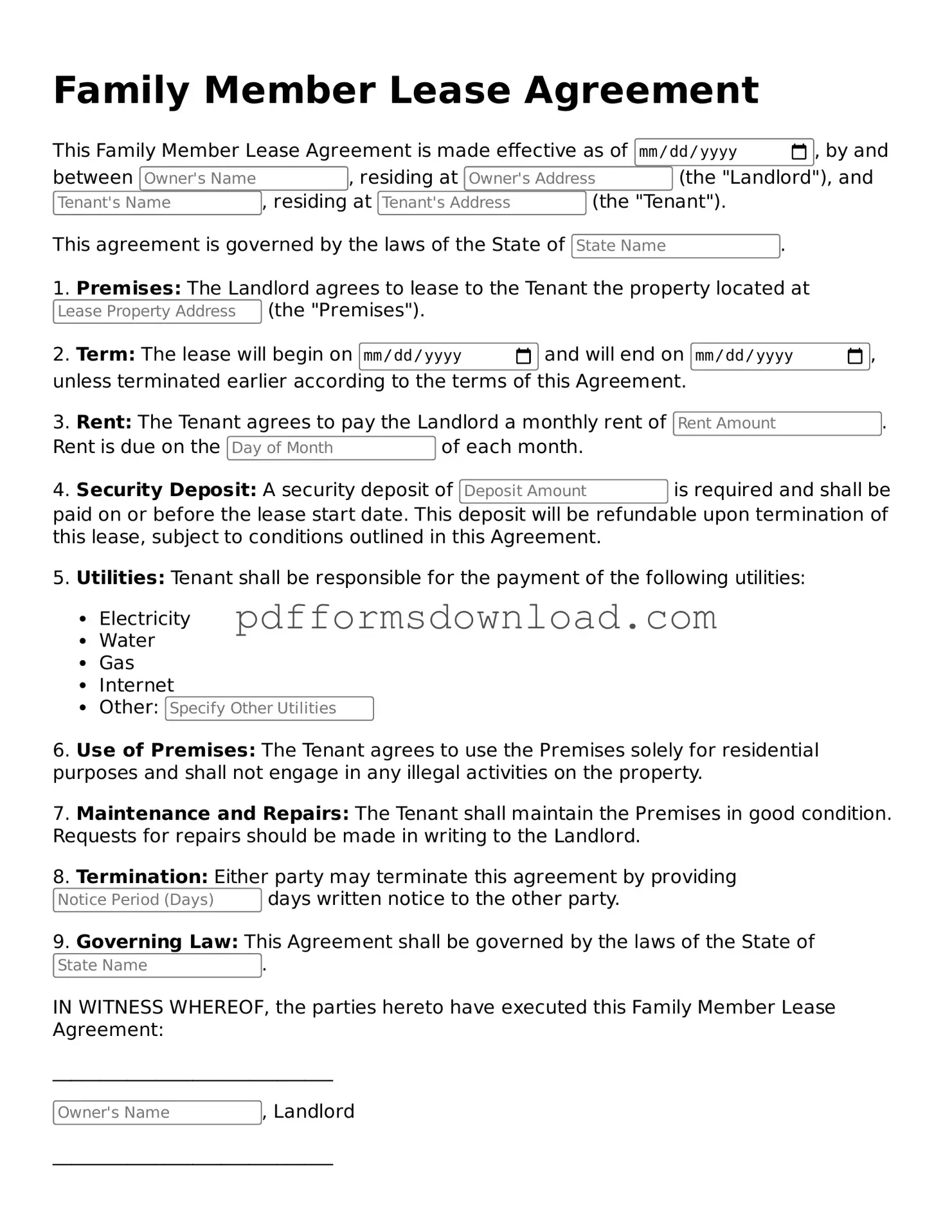What is a Family Member Lease Agreement?
A Family Member Lease Agreement is a legal document that outlines the terms and conditions under which a family member can rent a property from another family member. This agreement helps clarify expectations regarding rent, maintenance, and other responsibilities. It serves to protect both the landlord and the tenant by ensuring everyone is on the same page about the rental arrangement.
Who should use a Family Member Lease Agreement?
This agreement is beneficial for any family member who is renting a property from another family member. Whether it's a parent renting to a child, siblings sharing a home, or extended family members, having a formal lease helps avoid misunderstandings. It’s particularly important when money is involved, as it adds a layer of professionalism to the relationship.
What key elements should be included in the agreement?
A comprehensive Family Member Lease Agreement should include several key elements. These include the names of the landlord and tenant, the address of the rental property, the amount of rent, payment due dates, and the duration of the lease. Additionally, it should outline responsibilities for maintenance, utilities, and any rules regarding the use of the property. Clear terms regarding security deposits and procedures for terminating the lease are also essential.
Is a Family Member Lease Agreement legally binding?
Yes, a Family Member Lease Agreement is legally binding as long as it meets the necessary legal requirements. This means that both parties must agree to the terms and sign the document. However, the enforceability can depend on local laws and regulations. It’s wise to ensure that the agreement complies with state and local housing laws to avoid potential disputes in the future.
Can a Family Member Lease Agreement be modified?
Yes, a Family Member Lease Agreement can be modified, but both parties must agree to any changes. It’s best to document any modifications in writing and have both parties sign the updated agreement. This ensures clarity and helps prevent misunderstandings. Open communication is key when making changes to the lease terms.
